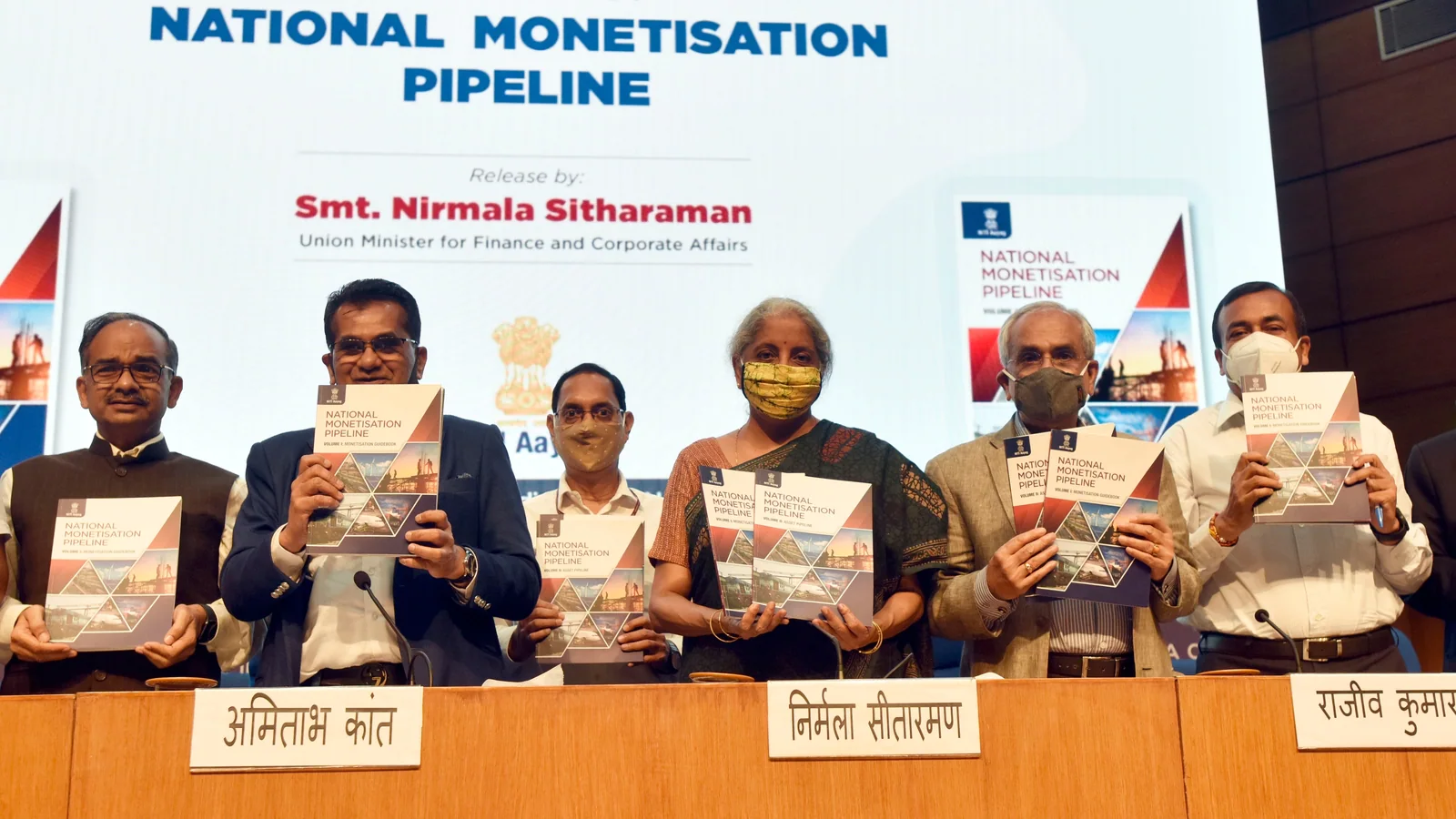The National Monetization Pipeline (NMP) initiative continues to be a prominent part of the national economic discourse ever since it was launched in the month of August this year. NMP, as the name suggests, is a transparent pipeline of operational public assets across infrastructure sectors such as roads and highways, railways, airports, ports, telecom, logistics, social and agriculture infrastructure which the Government intends to monetize in a planned manner by FY 2025. As such, monetization of public assets is not a new idea. There have been instances in the past when Governments have leveraged monetization to rope-in the private sector for enhancing the quality and efficiency of infrastructure asset management, and generate additional financial resources in the process. Shortly after the NMP was made public, it received appreciation from a wide section of stakeholders across the spectrum. However, naysayers have contorted this initiative to feed anxieties over government divesting off public assets. In most cases, the criticism appeared deprived of an objective assessment of the specifics concerning the NMP program. This article in fact is an attempt to assess the nuances of the National Monetization Pipeline initiative and present perspectives on how it can eventually help create superior value for various stakeholders in the infrastructure sector – the Government, the private sector as well as common citizens who are the end-users of infrastructure.
Even before we move ahead, it is important to first appreciate the objective of the NMP program. In this regard, the NMP guidebook released by the NITI Aayog states the following: “The strategic objective of Asset Monetisation programme is to unlock the value of investments in public sector assets by tapping private sector capital and efficiencies, which can thereafter be leveraged for augmentation/ greenfield infrastructure creation”. Building on this objective, NMP could actually prove to be an efficient and effective tool to create superior economic value from scarce public capital. The question is how? A chronic issue of the sector has been that considerable amounts of public money remains locked in infrastructure assets which are owned and operated by Government entities. These assets often see erosion in their economic value because of public sector inefficiencies. Monetization of such assets can help not only unlock this public wealth for the Government but also create possibilities of increasing their economic value. Monetization proceeds in turn can be invested afresh to finance a virtuous cycle of infrastructure development. Build – monetize – build could thus be a smart strategy to keep recycling scarce public capital and thus increase its efficiency and productivity considerably. Some numbers to put this in perspective – NITI Aayog’s guidebook estimates that NMP can help unlock approximately INR 6 lakh crores of economic value by FY 2025. That’s a substantial amount of capital which can be redeployed in creation of new productive assets. NMP could thus provide a significant multiplier effect to the economy.
Importantly, NMP could potentially become a creative framework to tap private sector efficiencies for activities which it could do better than the public sector. Normally, the private sector could undertake operations and maintenance of infrastructure assets better than the public sector. On the other hand, the private sector may not be forthcoming to bear risks pertaining to greenfield development of complex infrastructure projects such as development of bullet trains, freight corridors etc. Monetization could thus provide a smart framework through which, Government could focus its energies on creation of complex infrastructure and post the development of infrastructure, Government could partner with private sector to facilitate efficient operations and maintenance of the same. It is worthwhile to note that monetization largely involves structured public private partnerships based on concessions or instruments such as investment trusts. These concessions are structured as Toll-Operate-Transfer (TOT), Operations-Management—Development-Agreement (OMDA)) etc. helping the Government leverage private sector efficiencies while continuing to retain ownership and oversight of monetized assets.
Another important aspect of NMP that needs to be highlighted is that it provides a window to global institutional investors such as sovereign wealth funds (SWFs), pension funds (PFs), insurance funds etc. to set their foot in India and invest in infrastructure assets. Publicly available data suggests that large global institutional investors collectively manage a wealth of more than USD 30 trillion. These investors deploy a sizable portion of their capital into those infrastructure assets that offer them stable and predictable returns over the long term. Given the inherent risks associated with greenfield infrastructure projects in India, many of these large institutional investors often struggle to find investible opportunities that fit their investment appetite or philosophies. Monetization program can solve this deficiency by offering avenues to deploy capital in assets that are operating and thus are relatively less risky.
While the Government and the private sector can expect to derive superior value from the monetization initiative, it is actually the people who would benefit the most eventually as end users of infrastructure. NMP has the potential to create an enabling environment where infrastructure service providers have the right incentive structures to offer citizens access to affordable and high-quality infrastructure. The following comments of the Hon’ble Minister of Finance Smt. Nirmala Sitharaman allude to how NMP can benefit the lives of common citizens: “The Asset Monetisation programme has taken shape because of the vision of our Hon’ble Prime Minister who has always believed in universal access to high-quality and affordable infrastructure to the common citizen of India.….This is necessary for creating employment opportunities, thereby enabling high economic growth and seamlessly integrating the rural and semi-urban areas for overall public welfare”.
Having said that, NMP, albeit a bold initiative, is however one pillar of the comprehensive gameplan of the Modi Government to build a world-class infrastructure in India by FY 2025. Besides NMP, the Government is also implementing the INR 111 lakh crore National Infrastructure Pipeline (NIP), disinvestment / privatization and the PM Gati Shakti Master Plan. These four mega initiatives, taken together, are likely to overhaul and modernize the face of Indian infrastructure holistically.


